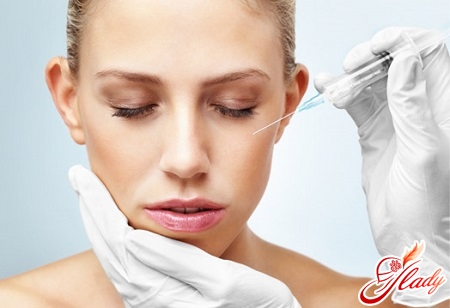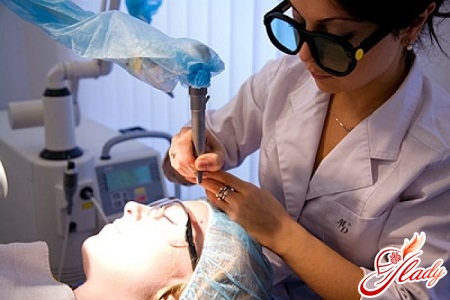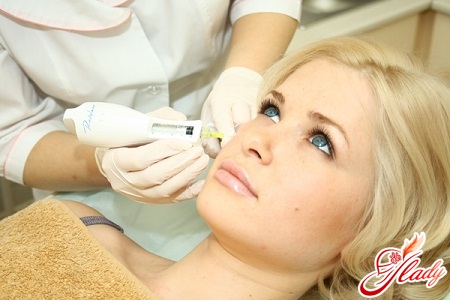
Papilloma is a typea benign tumor, which is a papillary growth protruding above the surface of the skin. A peculiar defect of the skin is a fairly common phenomenon. Medical luminaries state the fact that almost 90% of all people on the globe are carriers of some type of papillomas. It must be said that there are a great many of them, because over 100 types have been described in detail by science. Moreover, papillomas can appear on any part of the body and not only on the visible surface, such as papillomas on the face and hands. Experienced doctors easily diagnose types of papillomas by location, color, shape, size and symptoms. However, some of them can be very hidden and for the time being do not show any signs of their existence.
Medical classification of papillomas
For ease of classification of a specific virusHuman papillomavirus (HPV) is assigned a serial number. But you should not think that the higher the serial number, the higher the oncogenic risk. Only specialists can understand this, and a person who is not knowledgeable in medicine only needs to know that, when starting self-treatment and removing hated growths at home, you should still consult a doctor who will suggest the best option for getting rid of them depending on the type of defect. Especially if this concerns such an important area as papillomas on the face. After all, some types are “responsible” for the appearance of warts, others are growths on the sole, which, due to ignorance, can easily be confused with ordinary calluses, and some can affect organs such as the vagina, penis, cervix or even the respiratory tract. Regardless of whether papillomas appear inside or on the surface, only those caused by high-oncogenic-risk HPV are dangerous. There is no need to sound the alarm when skin growths appear, because of all known varieties of the virus, only 7-10 types are recognized as dangerous or conditionally dangerous in terms of degeneration into a malignant tumor. But even these types can be treated with timely deactivation in the form of preventive procedures.
Facial papilloma: origin and species
It must be agreed that the dangling growth onon the face - a rather unpleasant phenomenon, but it gives an opportunity to pay attention to it in time and carry out treatment. But the internal asymptomatic type can be more unpredictable. Therefore, at the first signs of the appearance of a papilloma on the face, you should go to a specialist to determine the origin of the neoplasm and begin to treat it correctly. In cosmetology apartments, they will undertake the treatment of papillomas that do not have a viral origin, which are fibropapillomas, seborrheic keratopapillomas and basal cell varieties. The latter - this is nothing more than a characteristic manifestation in elderly people. They, as a rule, are held on a leg and differ slightly from the main color of the skin. Keratopapillomas are based mainly on the delicate skin of the eyelids and are initially not noticeable, but only felt when touching the fingers. The size can vary from a tiny grain of sand to a grain of rice, held on a thin rod that is about to break. Fibropapilloma can be congenital. Of all the types presented, this papilloma is the most noticeable, and its removal can be complicated by the fact that it is permeated with blood vessels. If touched in an unfortunate way, fibropapilloma causes pain.
How to get rid of skin growths on the face
As already said above, what to deletepapillomas can only be treated by a specialist. In no case should you try to pull the papilloma stalk with a thread, wanting to get rid of it. The best effect at home is given by the pharmacy product "Superchistotel", but you also need to know how to use it so as to get only on the surface of the papilloma. Otherwise, you can damage the skin of the face. Papilloma on the face is not accompanied by any unpleasant, painful symptoms, but, naturally, it causes trouble because others notice it. Moreover, they often not only notice, but also begin to give advice on how to quickly get rid of the formation. You should not try on yourself everything that others recommend, since the treatment that suited one person may not give a positive result to another. Moreover, if the papilloma is of viral origin, then, having gotten rid of one, you can get a whole scattering of similar ones. Today, medicine has developed many methods for treating papillomas, but it cannot be said that any of them is universal. Each type requires its own approach, and only a dermatologist can determine this. In addition, each method has its drawbacks and, depending on the type of papilloma, a specialist will tell you which way to go. For simple papillomas, there is no better remedy than a surgical scalpel and, of course, an experienced surgeon. Cauterization with high-frequency current (diathermocoagulation) is effective for growths of a filiform, pointed or plantar variety. Liquid nitrogen is also suitable for many varieties. A special radio knife will not only painlessly destroy the formation, but also carry out treatment in such a way that it will be possible to avoid recurrence of the papilloma. Laser removal of papillomas is very common today, since it does not leave scars, which is very important when performing the procedure on the face. But healing takes about a month, and, having decided on this method, you need to have time in reserve for further restoration of the skin surface. It is better to plan treatment and plan a vacation for this period. Otherwise, violations of doctors' recommendations during the skin recovery period can leave consequences in the form of depressions and unevenness.
Folk remedies in the fight against papillomas
Of course, not everyone is ready at the first signgrowth of papilloma on the face, run to the doctor. It must be said that Russian citizens for the most part rely on "maybe it will resolve itself". It is strictly forbidden to resort to aggressive removal on your own. Another thing is if you want to try treatment with harmless folk remedies, such as potato or celandine juice. Only potatoes should be used red varieties and squeezed juice should not be rubbed or applied to the formation, but simply drink half a glass daily. You can try rubbing a mixture of regular face cream with the addition of garlic gruel. It happens that a frozen infusion of chaga, string and celandine gives an effect, which should be applied to the papilloma in the form of an ice cube for no more than 5 minutes. Repeat the procedure 2-3 times a day. It is recommended to rub castor oil into the place of growth 2 times a day. Experts say that most often the papilloma virus affects people with reduced immunity. So, before starting treatment, acting locally on the growth, you should pay attention to increasing immunity. Here you can use both vitamins and herbal teas. It is usually recommended to drink at least a week of a herbal tea of plantain, horsetail, nettle, lemon balm and dandelion root in equal proportions. All components are infused using a water bath and consumed 30-40 minutes before meals before main meals.









